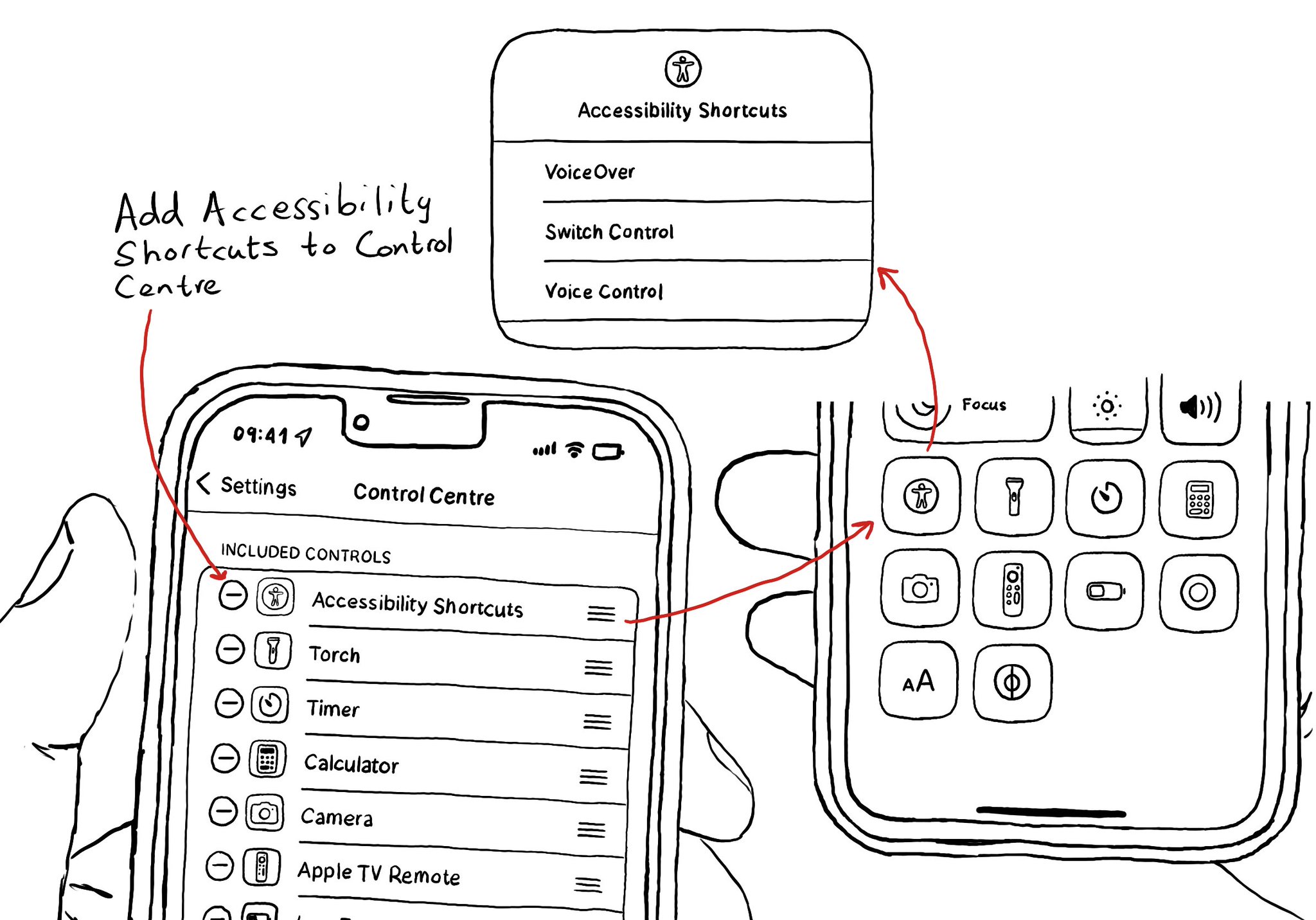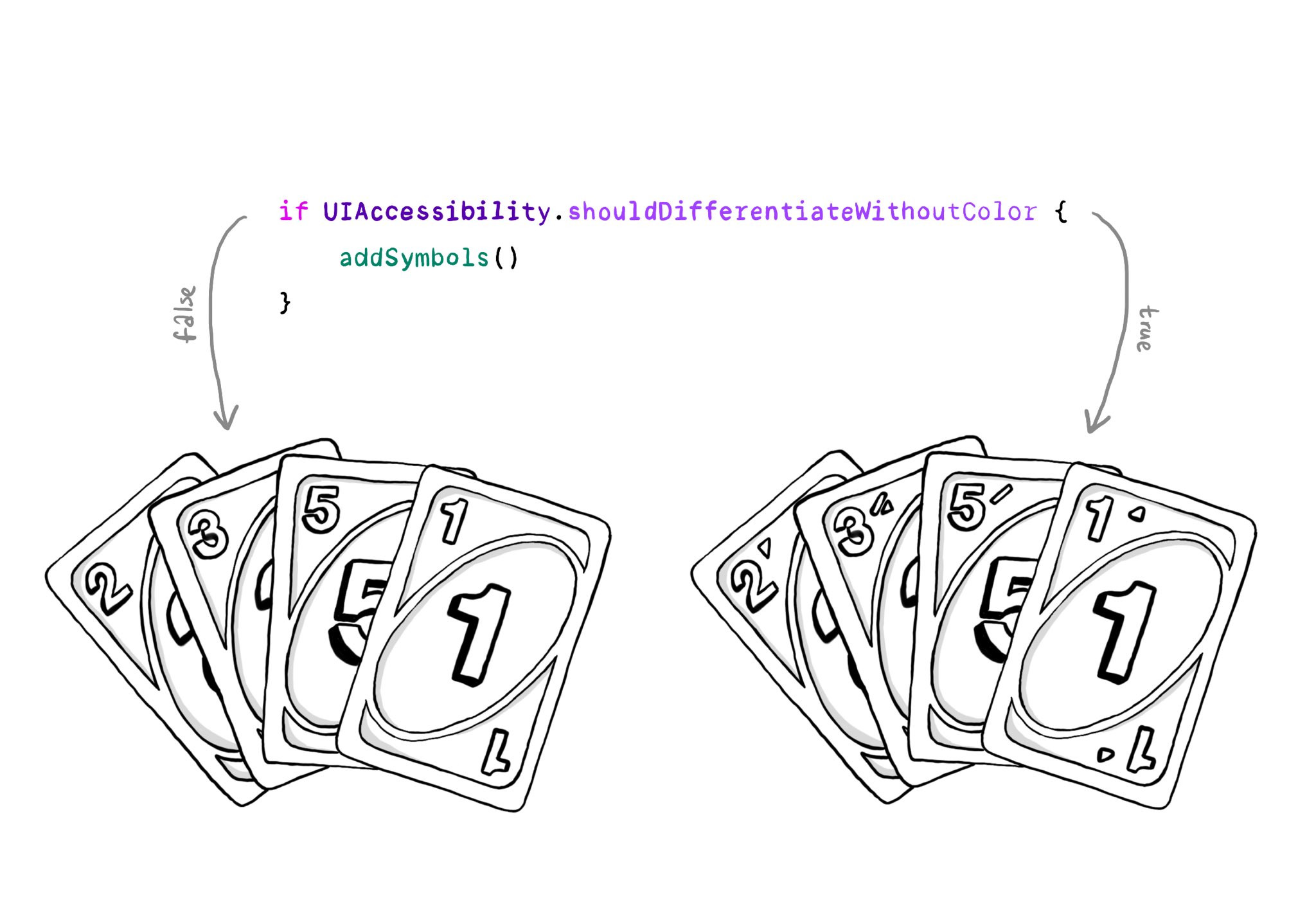@NSSpain has a great history of having amazing accessibility talks in their schedule!
“Accessibility in the Real World”, by @Sommer: https://vimeo.com/235317172
“How to build an app for everyone”, by @NovallSwift: https://vimeo.com/362163043
The super fun "Choose your own SwiftUI adventure - 3 Accessibility", by @twostraws and @PinkerStraws: https://vimeo.com/481768105
And, of course, this year's great "Bas: My Accessibility Story", by @basthomas: https://vimeo.com/751176747
You may also find interesting...

You can add your Accessibility Shortcuts to Control Centre too. One more quick access point and one more reminder to get you testing often and quickly. How to enable Accessibility shortcuts: https://x.com/dadederk/status/1583519154165800960?s=61&t=_fK9Muzu2MyFEeJLVQZcJg

You should convey important information in multiple modes, not just color. If you are still required to do so, at the very least you should complement that info with other modes, like symbols, if the user requested differentiation without color.

Make sure you support Dynamic Type up to the largest text size available. Take into account that there are five extra accessibility sizes available from the Accessibility Settings. It can make a huge difference for lots of users.